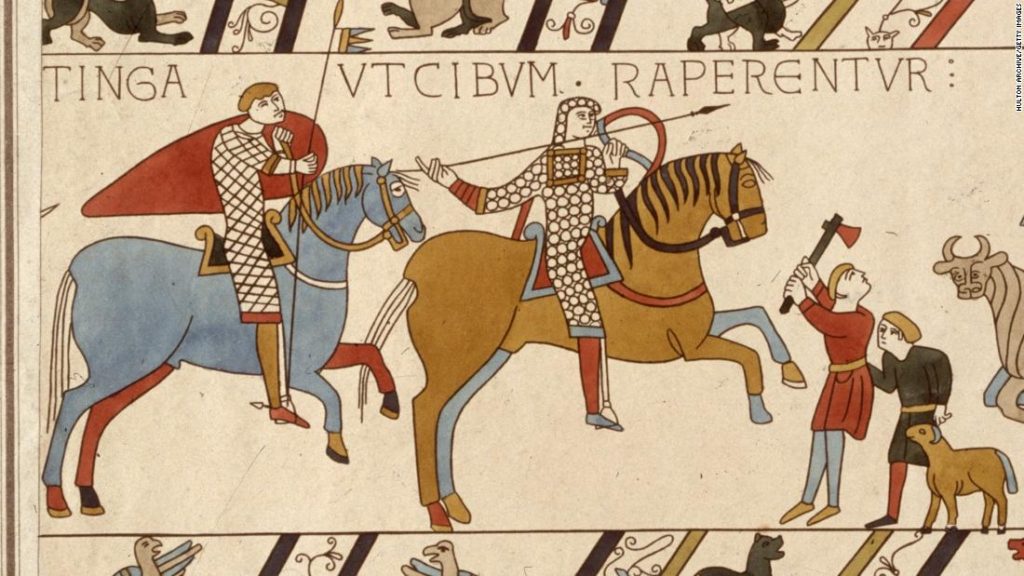The Middle Ages: knights and squires, castles and cathedrals, peasants and troubadours, monks and Crusaders, pease porridge, stuffed swans, King Arthur, the Canterbury Tales, and the black plague – and much more.
See below for books, resources, projects, activities, and arts and crafts, including instructions for making your own castle, Bayeux Tapestry, and catapult.
Table of Contents
NON-FICTION: MEDIEVAL LIFE
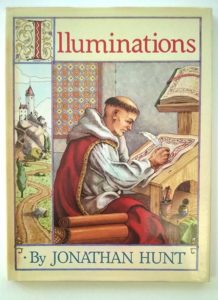 |
Jonathan Hunt’s Illuminations (Simon & Schuster, 1989) is a gorgeously illuminated medieval alphabet book, in which A is for Alchemist, E for Excalibur, and U for unicorn. For ages 5-8. |
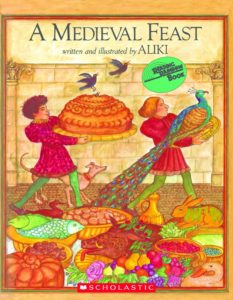 |
In Aliki’s A Medieval Feast (HarperCollins, 1986), the king is coming to Camdenton Manor and the lord, lady, serfs, and villagers are in a frenzy of preparation, hunting, fishing, brewing, baking, and churning. Beautiful detailed illustrations show every step of the exciting process. For ages 4-8. |
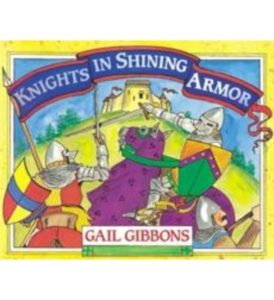 |
Gail Gibbons’s Knights in Shining Armor (Little, Brown, 1998) is a pcture-book history of the Middle Ages with bright, attractive illustrations and a simple straightforward text. Knights, writes Gibbons, “wore strong armor and fought on horseback with deadly weapons. Their entire way of life was based on warfare.” For ages 4-8. |
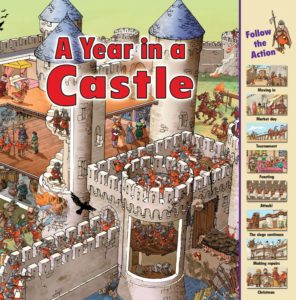 |
Rachel Coombs’s A Year in a Castle (First Avenue Books, 2009) traces life in a castle month by month through the seasons of the year, beginning with moving-in day in January. The illustrations are marvelous detailed cut-away drawings with “Can you find…?” call-outs in the margins. (Can you find the guard? The priest? The well?) An interactive read for ages 5-8. |
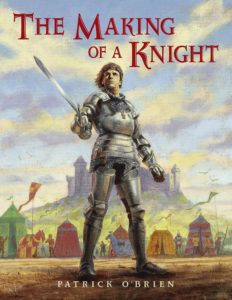 |
Patrick O’Brien’s The Making of a Knight (Charlesbridge, 1998) traces the story of seven-year-old James who becomes a page, then a squire, and finally, triumphantly, a full-fledged knight. Included are many details about medieval life. For ages 5-9. |
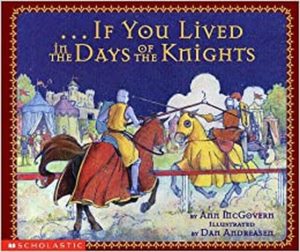 |
Ann McGovern’s If You Lived in the Days of the Knights (Scholastic, 2001) is written in question-and-answer format, which makes for a great read-aloud and discussion book. Questions include “How could you tell one knight from another?” “What kinds of clothes did people wear?” “Were there bathrooms?” “Would you go to school?” and “How did you get around?” One of the “If You…” series for ages 7-10. |
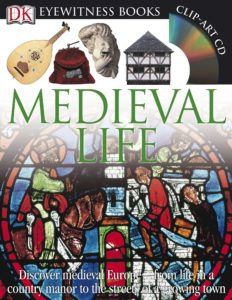 |
Andrew Langley’s Medieval Life (Dorling Kindersley, 2011) is one of the popular Eyewitness series, characterized by wonderful photographs of artifacts and reproductions of historical illustrations. Each double-page spread in the book is devoted to a different topic, among them “A medieval home,” “The medieval soldier,” “The royal court,” “Building a cathedral,” and “Fairs and feast days.” For ages 7 and up. |
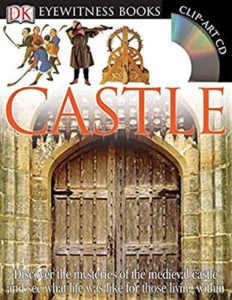 |
In the same series, also see Christopher Gravett’s Knight (Dorling Kindersley, 2007) and Castle (2008), and Michele Byam’s Arms and Armor (2011). |
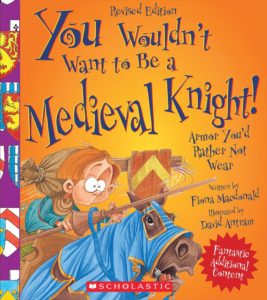 |
Fiona MacDonald’s You Wouldn’t Want to Be a Medieval Knight! (Franklin Watts, 2013) is a clever, conversational history that points out some of the drawbacks, should you have chosen knight as your future profession. One of a series, in which the text, written in the second person, speaks directly to the reader. That, combined with the humorous cartoon-style illustrations, makes for a fun and appealing read. For ages 8-11. |
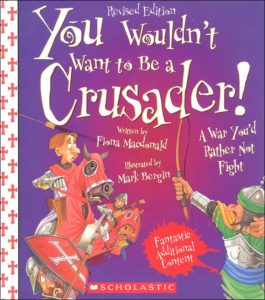 |
Also by MacDonald, see You Wouldn’t Want to Be a Crusader! (2005) and You Wouldn’t Want to Work on a Medieval Cathedral! (2010). |
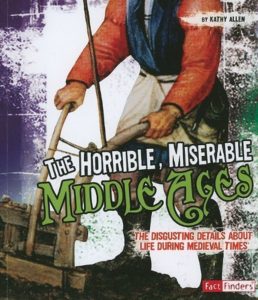 |
Kathy Allen’s The Horrible Miserable Middle Ages (Capstone Press, 2011) is one of the Digusting History series, in which all the titles include such kid-appealing words as Foul, Filthy, Crude, Rotten, and Smelly. Each 32-page book covers the gickiest aspects of a given historical period – in this case, everything from messy trenchers to repulsive chamber pots, fearsome medical practices, lice, and the black plague. For ages 8-11. |
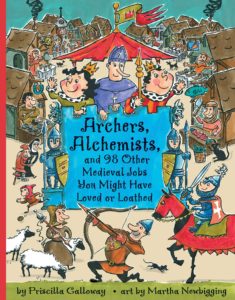 |
Priscilla Galloway’s Archers, Alchemists, and 98 Other Medieval Jobs (Annick Press, 2003) includes an annotated timeline, clever cartoon illustrations, and a catchy overview of careers in the Middle Ages. What would you have been: a monk, a squire, or a witch hunter? For ages 8-12. |
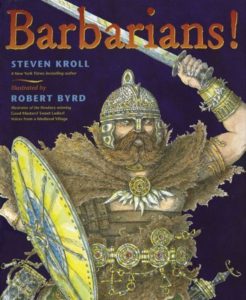 |
By Steven Kroll, Barbarians! (Dutton, 2009) describes the lives and times of the “barbarians:” Goths, Huns, Vikings, and Mongols. For ages 9-12. |
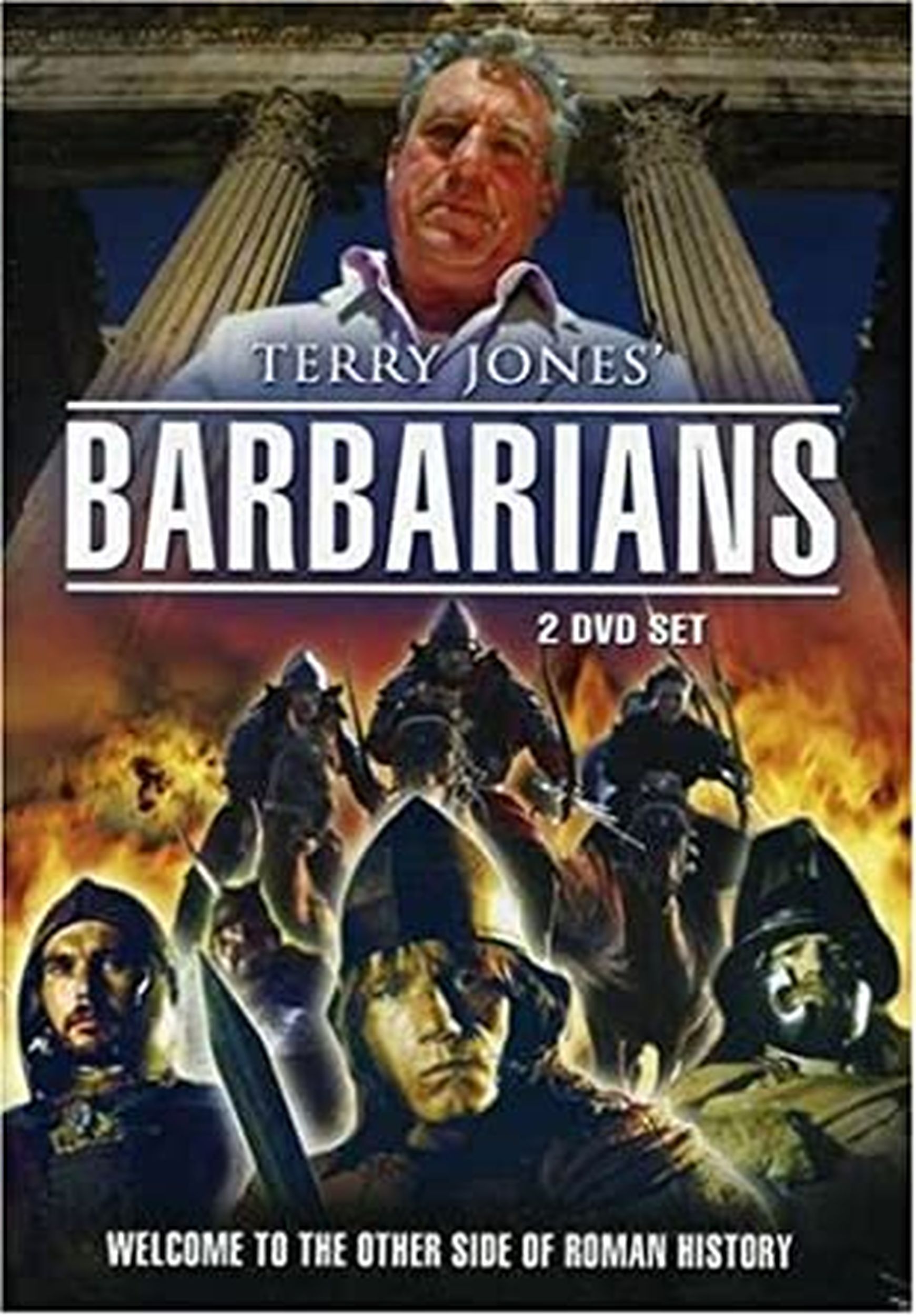 |
Were the barbarians really that barbaric? See the alternative side of history in Barbarians (BBC, 2006), Terry Jones’s 4-part documentary. Episodes are The Primitive Celts, Savage Goths, The Brainy Barbarians, and The End of the World. Also available on DVD. |
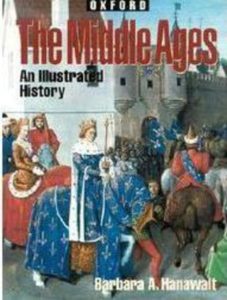 |
Barbara Hanawalt’s The Middle Ages An Illustrated History (Oxford University Press, 1999) is a scholarly, but entertaining, 160-page history, illustrated with photographs of artifacts, maps, period artwork, and more. A thorough introduction for ages 12 and up. |
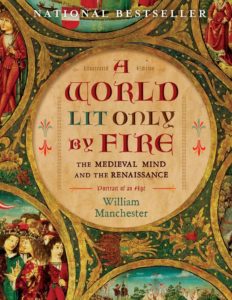 |
William Manchester’s A World Lit Only by Fire (Little, Brown, 1993) was a best-seller. An absorbing narrative history of the Middle Ages for teenagers and adults. Don’t get your high-school-level kids a textbook. Get this. |
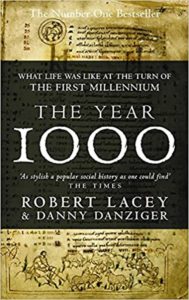 |
By Robert Lacey and Danny Danziger, The Year 1000 (Back Bay Books, 2000) is a delightful read describing, in twelve chapters, what life was like for the English at the turn of the first millennium. Find out how people managed without buttons or sugar. |
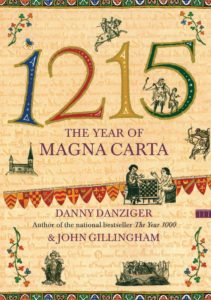 |
Also by Danny Danziger, see the equally reader-friendly and absorbing 1215: The Year of the Magna Carta (Touchstone, 2005). |
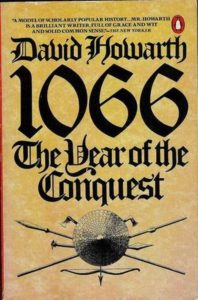 |
By David Howarth – a wonderful history writer – 1066: The Year of the Conquest (Penguin Books, 1981) is a short (200 pages) account of the pivotal year in English history when William the Conqueror defeated King Harold at the Battle of Hastings. The book contrasts life in the little village of Horstede before and after William took over. For teenagers and adults. |
| The Battle of Hastings Game is an interactive exercise in which players re-enact the famous battle. You have a choice of playing as either William or Harold. | |
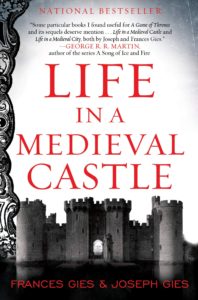 |
By Joseph and Frances Gies, Life in a Medieval Castle (Harper Perennial, 1979) is a fascinating history, packed with human interest, appealing information, and primary sources. (It begins with a bang, with the arrival of a thousand longboats, bearing the vast army of William the Conqueror.) For teenagers and adults. |
| By the same authors, also see Life in a Medieval Village (HarperPerennial, 1991), Life in a Medieval City (HarperCollins, 1981), and Cathedral, Forge, and Waterwheel: Technology and Invention in the Middle Ages (1995). | |
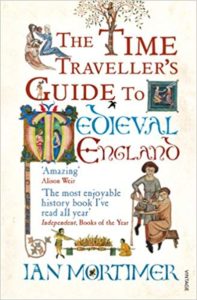 |
Ian Mortimer’s The Time Traveler’s Guide to Medieval England (Touchstone, 2011), subtitled “A Handbook for Visitors to the Fourteenth Century,” is just that: readers find out how to greet people in the street, what to expect in towns and villages, where to stay along the way, what to wear – even what to use for toilet paper. A real look at the medieval world for teenagers and adults. |
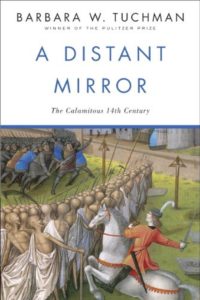 |
Barbara Tuchman’s A Distant Mirror (Random House, 1987) is a fat (700+ pages) but fascinating account of the “calamitous 14th century,” much of it centering around French nobleman Enguerrand de Coucy, who played a surprisingly large part in it. A great read for interested teenagers and adults. |
| Mr. Donn’s Medieval Times topics are categorized under Power of the Secular Rulers, Daily Life, and Power of the Catholic Church. There’s a lot of kid-friendly material to explore. For example, visitors learn about Justinian’s Code, Mythical Medieval Beasts, Medieval Music, the Inquisition, Holy Relics, and Illuminated Manuscripts. Generally aimed at an upper-elementary and middle-school audience. | |
| Khan Academy’s Medieval Europe is a multifaceted study unit in five parts: A beginner’s guide to medieval Europe; Books and the dissemination of knowledge in medieval Europe; Early Christian; Byzantine; and Latin (Western) Europe. Lots of well-presented, illustrated information. | |
| Mostly Medieval has information on ballads, Books of Days, heraldry, fabulous medieval beasts, the medieval church, and medieval medicine. | |
| From Annenberg Learner, Middle Ages is an interactive tour of the period. Visitors can read about feudal life, identify a collapsed cathedral, learn about medieval medicine, and view a medieval tapestry. Included is a list of links to primary source materials. | |
| From the Stanford History Education Group, The Dark Ages has a downloadable collection of lesson plans, document sets, and timelines. | |
| From the BBC, The Middle Ages has a series of interesting essays, categorized under such topics as John and Richard I: Brothers and Rivals, Invasion, Conquest, and the Hundred Years War, The Black Death, and the Houses of Lancaster and York. | |
| The Great Courses – which sells high-school- and college-level lecture series on CD, DVD, or as downloads – offers several courses on various aspects of the Middle Ages and the Crusades. (At full price, the cost is intimidating, but all of the Great Courses go on sale periodically, at substantial savings.) Recommended for college-level learners, but fine for interested high-school-level students. | |
| From Fordham University, The Internet History Sourcebook Project is an enormous compendium of categorized primary sources. Included are the Ancient History Sourcebook, Medieval History Sourcebook, Modern History Sourcebook, and more. Medieval subcategories include End of Rome, Celtic World, Crusades, Carolingians, France, England, Medieval Church, and Social History. A terrific resource. | |
| TEAMS (Teaching Association for Medieval Studies) is a consortium for the teaching of the Middle Ages, established to support medieval studies at the elementary, secondary, and undergraduate levels. See the site for online texts and an extensive list of teaching resources. Click on “Medieval Studies in the Schools” for a list of the top 15 topics to cover, with links. |
